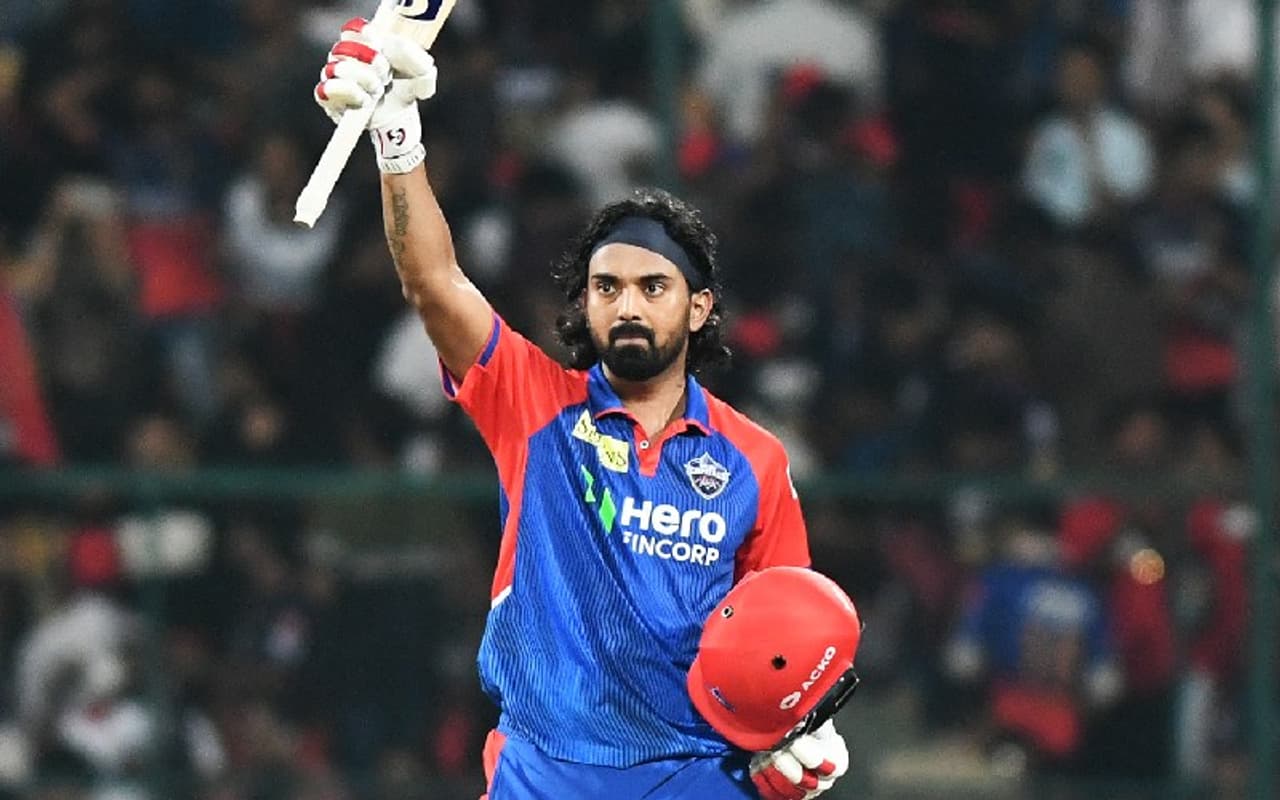KL Rahul 2.0: The calm conqueror redefining white-ball greatness
KL Rahul’s unbeaten 93 against Royal Challengers Bengaluru not only anchored Delhi Capitals’ victory but also revealed the quiet evolution of a batter who has turned perception on its head with poise, patience, and precision.

The Quiet Evolution of KL Rahul
There was a time when KL Rahul’s white-ball game was judged with raised eyebrows. Labels stuck to him like old post-its — stat-padder, lack of intent, anchor who slowed things down. But something has changed. Something deep and deliberate.
And on a gripping Thursday night at the Chinnaswamy Stadium — a ground he once called home — Rahul announced his transformation in the most emphatic way.
An unbeaten 93 off 53 balls. A strike-rate of 175. And a statement that wasn’t shouted, but spoken fluently through timing, technique, and tactical nous. Delhi Capitals beat Royal Challengers Bengaluru by six wickets, but this was Rahul’s night — his story.

From Doubt to Definition
Others in this IPL have dazzled too — Tim David (185 SR) and Phil Salt (210 SR) have been more explosive on paper. But their methods have been built on power, risk, and playing the percentages at the fringes — in the Powerplay or the death.
Rahul’s approach on Thursday was different. Measured. Intentional. Calculated.
Starting off with 29 runs from 29 balls, he might’ve invited criticism in another era. But the Rahul of 2025 is playing a longer game — one that unfolds in gears. The next 24 balls brought 64 runs. The acceleration was inevitable, not impulsive.
Reading the Pitch, Reading the Moment
"It's easy to term the innings as a product of his first-hand knowledge of the local conditions as a Karnataka boy,” went the typical line of thought. Rahul agrees, but only to a point. “That is just one chapter of the story.”
Indeed, this wasn’t just about familiarity — it was about mastery.
In the 15th over, with the game still poised, Rahul targeted Josh Hazlewood. The result: 22 runs, punctuated by three elegant fours and a nonchalant six that floated over the bowler’s head.
No anger. No slog. Just a perfectly timed open-faced bat meeting the ball with poise — a shot born from reading the slowness of the pitch better than anyone else.
While his teammates — Jake Fraser-McGurk, Faf du Plessis, and Abhishek Porel — perished attempting cross-batted hits, Rahul waited. He picked his moment. And when it came, he didn’t miss.
A Batter Built on Adaptability
It’s not just Delhi Capitals who are leaning into KL Rahul’s evolution. It’s Rahul himself.
“The Capitals are trying to weave their batting around Rahul,” the dressing room whispers now say. And there’s good reason — not just in his calmness under pressure, but in his technical versatility.
RCB mentor Dinesh Karthik, who knows the pressures of being a floater in a T20 line-up, acknowledged the shift:
"It's very challenging to bat at different positions in T20. But he's done that really nicely in the recent past. I’ve believed he's a high-quality middle-order batter. He's tweaked a bit."
What’s more noticeable is the freedom Rahul now plays with. Karthik credits Abhishek Nayar for that transformation.
"From whatever I'm hearing, he's worked with Abhishek Nayar before the IPL started. You can see he's getting into some good positions and playing some nice shots. He always had the skill. You can see when he has given himself more freedom and the way he's played, it's been nice to watch. May not be from my perspective, though."
Preparation Meets Presence
Rahul himself revealed a peek into his meticulous preparation — a shift from sheer hours of slogging to smart simulations.
"I always try to adapt to different wickets (even in practice). It gives me a fair idea of the areas I can target - where I can take singles, where I can hit sixes. I don't keep batting for hours and keep slogging. I do that sometimes but that is when I am not getting into a flow and rhythm. It is more about how I can master playing (on a particular pitch) and that becomes second-nature."
It showed. Especially in the way he handled Suyash Sharma — arguably RCB’s most effective spinner this season.
Knowing that the inexperienced Tristan Stubbs might struggle against leg-spin, Rahul took ownership. He played out 13 balls against Suyash, scoring just four runs — not out of caution, but control. It was tactical self-denial, a veteran understanding the value of economy over ego.
A Circle, A Statement, A Second Home
Then came the finale — the six off Yash Dayal that sealed the win. But it wasn’t just the winning moment that caught the eye. It was what followed.
Rahul drew a circle on the turf, then tapped his bat in the middle. A subtle but symbolic gesture.
"This is my home ground, and I know it better than anyone else," he said later.
But it felt like something more.
It felt like KL Rahul, often seen as the wanderer in India’s batting map — a floater in positions, a man in search of a role — had finally planted his flag in the white-ball arena.
He now has another home.
One built not on memory, but mastery.
Also read: Karthik hails 'high-quality' batter KL Rahul after RCB's loss to DC
Stay on top of all the latest Sports News, including Cricket News, Football News, WWE News, and updates from Other Sports around the world. Get live scores, match highlights, player stats, and expert analysis of every major tournament. Download the Asianet News Official App from the Android Play Store and iPhone App Store to never miss a sporting moment and stay connected to the action anytime, anywhere.